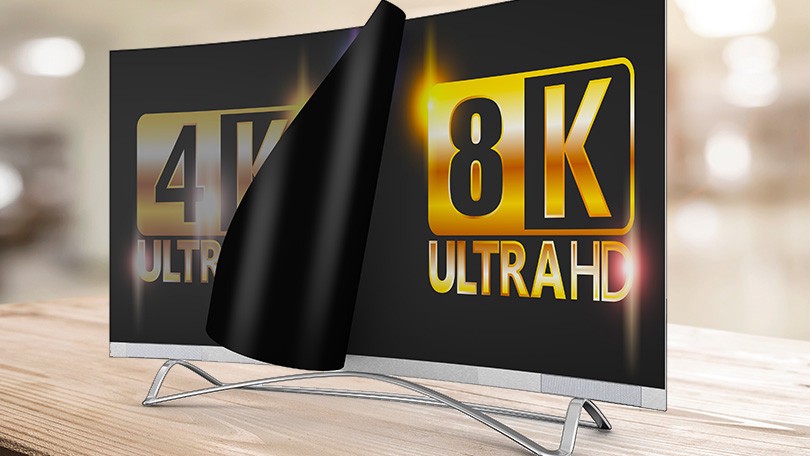4K vs 8K resolution

That’s where we currently are in the battle between 4K vs 8K TVs. Although having widespread access to true 8K UHD content is a long way off, many TV manufacturers are hoping that the impressive upscaling and greater clarity offered by the newest wave of 8K sets will be enough to convince enthusiasts that it’s worth upgrading from 4K TVs for good.
8K video is a newer standard than 4K, with higher resolution, and clearer image. 1080p screens have a resolution of 1920 x 1080 pixels. 4K screens double those numbers to 3840 x 2160 and quadruple the number of pixels. 8K doubles the numbers again, to a resolution of 7680 x 4320 pixels. That’s four times the number of pixels as 4K, which means it’s 16 times that of a 1080p TV.
8K has over 33 million pixels, which leads to sharper visuals; in fact, you cannot distinguish the pixels on the screen. You’ll need a powerful graphics card to push more than 33 million pixels at a 60Hz refresh rate.
You need to know unless you live in Japan, you’re not going to have native 8K content any time soon. That means, just because you have an 8K TV it doesn’t mean any of the things you want to watch – TV shows, streaming content, movies, even most YouTube videos – come in an 8K resolution.
Right now, there are a handful of 8K videos on YouTube, which is likely going to be your best bet for watching true 8K content soon. However, YouTube’s TV app is still limited to a maximum resolution of 4K for the time being, and it probably won’t be updated until 8K TVs become more mainstream.
More details about 8K resolution you can find on Download8K.info web site.
* * *
- 4K 360 Video
- 4K HDR Video
- Monitors with 4K resolution
- 4K Projectors
- Smartphones with 4K video support
- 4K Streaming Devices
- 4K Webcams
- A comparison of 4K against all the available consumer video resolutions
- Best 4K Action Cams
- The Best 4K cameras on smartphones
- Best 4K Hindi / Tamil / Bollywood Movies
- Everything you need to know about 4K Projectors
- HEVC (H.265) Codec
- How to download any streaming 4K video in just 3 steps!
- PC hardware capable for playing games at 4K resolution
- Top 5 4K software video players for PC/Mac
- List of the top 10 4K / Ultra HD TV
- Top graphics cards for 4K gaming
- Top-rated 4K movies
- What are UHD and 4K video
- Is the human eye capable to see in 4K?
